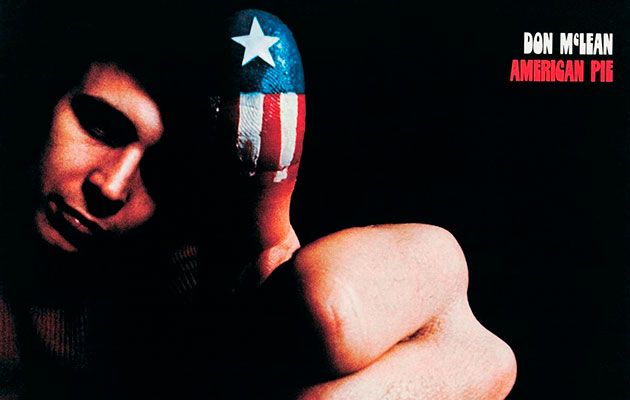FREEMAN: The first time I heard “American Pie” he had only written the first verse and the chorus, and I remember saying, “Hey, that could be a hit record.” And then I heard the finished thing, and I realised there was no way in hell that was going to be a hit record.
MCLEAN: He got the rehearsal studio in uptown New York of a guy named Dick Cutler. And wisely, Ed had put together a little group of guys – like Rob Stoner [then Rothstein] on bass. I think he had a piano player and maybe a drummer, and we went there and rehearsed for about a week.
ROB STONER: Our wives were friends, and so Don and I were hanging out socially and jamming. He and I rehearsed and worked up “American Pie”. He was constantly tweaking the lyrics. I thought it was a really great Buddy Holly tribute. The melody is a direct cop from Holly’s “I’m Gonna Love You Too”. It’s the same exact melody and chords! – at least for the first 8 bars. It’s a homage to Holly, in more ways than lyrically.
FREEMAN: Don was not comfortable with the idea of working with seasoned studio musicians. So I put together a band who were not all slick studio players, and took a bass player and a drummer and worked out the song’s arrangement for a couple of weeks.
MCLEAN: That was really necessary for me. But nobody could get “American Pie” even close to right.
FREEMAN: The first verse stayed the way he played it on the guitar. It was my idea to switch it to piano, which I think he objected to.
MCLEAN: Then Ed saved the day by coming up with a piano player called Paul Griffin [who died June 14, 2000], on the day of the session at the Record Plant. I was playing hard, rhythm acoustic guitar. And Paul Griffin heard that guitar, and he started playing gospel piano all over that record, and that’s what made that track happen. Up until that day, it was a disaster.
DAVID SPINOZZA: Paul was famous for playing that way. Paul and I had mostly done black r’n’b dates. At that time, you didn’t get many black or r’n’b musicians who got called in to play on a folk-rock record. We were playing with Aretha – that was our roots. Paul brought a sort of churchy, gospel joyousness to this tune that was about death. He brought out that juxtaposition. It’s a bittersweet song.
MCLEAN: Everything was rocking and jumping, it was everything I wanted. The track itself on the record is live, with all the guys playing. Everybody felt it and just jumped all over it.
SPINOZZA: I remember the playing building in excitement. I thought that we hit on something. I didn’t have a name for it. I couldn’t figure out what genre of music it was. Because Paul was doing his gospel thing over there, and then Don’s acoustic guitar comes in and it goes to another level, and then I come in half-way through on electric guitar. It built very naturally.
FREEMAN: The body of the song was recorded all at once, except for the first verse, which has something like 16 splices. It turned out Paul Griffin was originally a violinist, he’d switched to piano quite recently. He was nervous about the solo, and didn’t really know what to do.
SPINOZZA: I’d done thousands of hours in the studio with Paul Griffin before we did “American Pie”. He was a great piano player.
TOM FLYE: Paul’s a great piano player, but together with Don’s singing, it’s two free-form, fluid things at once. So we took the razor-blade to it.



